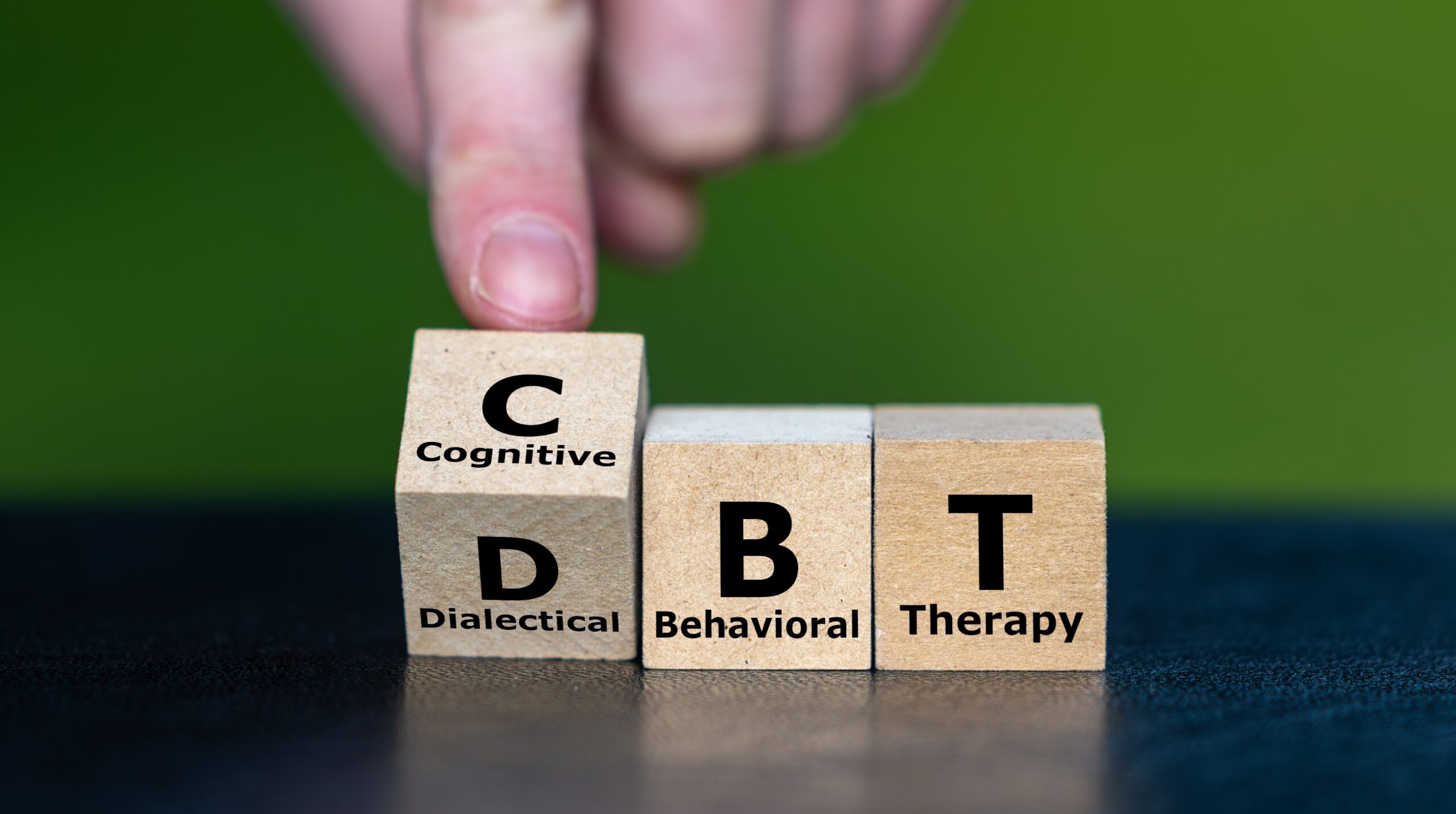1. Introduction
When navigating mental health treatment options, two of the most widely known and evidence-based therapies are Cognitive Behavioral Therapy (CBT) and Dialectical Behavior Therapy (DBT). While they share some foundational principles, they diverge significantly in their approach, structure, and target populations. Understanding the key differences between DBT and CBT can help individuals make informed choices about which therapy may best support their mental health needs.
2. Overview of Cognitive Behavioral Therapy (CBT)
CBT is a structured, goal-oriented psychotherapy that focuses on identifying and changing negative thought patterns and behaviors. It is based on the idea that our thoughts, feelings, and behaviors are interconnected, and that modifying distorted thinking can lead to changes in emotions and actions.
CBT is often short-term and is widely used to treat conditions such as:
- Generalized anxiety disorder
- Depression
- Panic disorder
- Phobias
- Obsessive-compulsive disorder (OCD)
- PTSD
CBT sessions typically involve homework assignments, worksheets, and techniques like cognitive restructuring, exposure exercises, and behavioral activation.
3. Overview of Dialectical Behavior Therapy (DBT)
DBT was developed by Dr. Marsha Linehan in the 1980s specifically to treat individuals with borderline personality disorder (BPD), especially those struggling with chronic suicidal ideation and emotion dysregulation. While it builds upon CBT’s foundation, DBT incorporates mindfulness, emotional acceptance, and interpersonal effectiveness into its framework.
Today, DBT is also used for:
- Eating disorders
- Substance use disorders
- PTSD
- Depression
- Self-harming behaviors
DBT consists of four core modules:
- Mindfulness: Increasing present-moment awareness
- Distress Tolerance: Managing crises without worsening the situation
- Emotion Regulation: Understanding and reducing emotional vulnerability
- Interpersonal Effectiveness: Navigating relationships and asserting needs
4. Key Differences Between CBT and DBT
a. Focus on Acceptance vs. Change
- CBT emphasizes change—challenging and replacing unhelpful thoughts and behaviors.
- DBT balances change with acceptance. Clients are taught to accept themselves and their circumstances while working toward change.
b. Emotional Regulation
- While CBT addresses thoughts and behaviors that contribute to mood symptoms, it does not extensively focus on teaching clients how to regulate emotions.
- DBT offers a more robust framework for emotional regulation, making it ideal for individuals who feel emotions intensely or have trouble returning to baseline.
c. Session Structure
- CBT is typically one-on-one therapy with worksheets and skills practice tailored to the individual’s condition.
- DBT often includes multiple components: individual therapy, group skills training, phone coaching for in-the-moment support, and a therapist consultation team.
d. Population Treated
- CBT is a general approach that can be adapted for nearly any mental health issue.
- DBT was designed for individuals with high emotional sensitivity, chronic suicidality, or personality disorders, though its use has since expanded.
e. Use of Mindfulness
- CBT may include mindfulness techniques, but they are not a core focus.
- In DBT, mindfulness is a foundational skill, taught and practiced consistently to help clients observe thoughts and emotions without judgment.
5. Which One Is Right for You?
Choose CBT if you:
- Struggle with anxiety, depression, or phobias
- Prefer a structured, short-term therapy focused on problem-solving
- Want to challenge negative thought patterns and develop coping strategies
Choose DBT if you:
- Experience intense emotional highs and lows
- Have a history of self-harm or suicidal behaviors
- Struggle with relationship instability or impulsive behavior
- Are looking for a long-term, skills-based approach that includes mindfulness and emotional regulation
6. Can They Be Combined?
Yes. Many therapists integrate CBT and DBT techniques into their practice. For example, a client might use CBT to reframe cognitive distortions and DBT to learn how to tolerate distress and improve communication. This integrative approach is increasingly common in modern mental health care.
7. Access and Availability
While CBT is more widely available due to its generalist application, access to full DBT programs—including all four components—may be more limited. However, many therapists offer DBT-informed care, using principles and skills without the full program structure.
If you are seeking evidence-based treatment, the National Institute of Mental Health recognizes both CBT and DBT as effective therapies for a variety of mental health disorders (NIMH – Psychotherapies).
8. ConclusionCBT and DBT are both powerful tools for mental health treatment. Choosing the right one depends on your symptoms, goals, and preferences. CBT may be more suitable for those looking to quickly address specific thought patterns, while DBT is ideal for individuals seeking deeper emotional and behavioral change. Consulting with a qualified mental health professional can help you determine the best fit and begin your journey toward greater emotional well-being.


